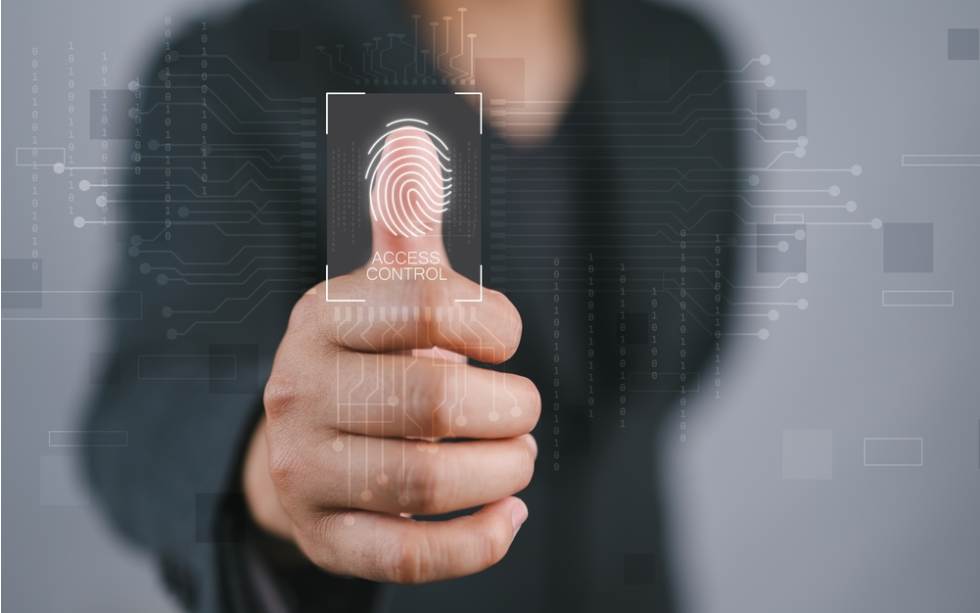The Pembroke
- 112 units available
- 1 bed • 2 bed
- Amenities
In unit laundry, Granite counters, Hardwood floors, Dishwasher, Pet friendly, 24hr maintenance + more

Controlled access is a building feature that restricts entry to authorized people, usually through keys, fobs, key cards, PIN codes, or smartphone credentials. It’s designed to make sure only residents, staff, and approved visitors can get inside.
For renters, it can mean better security, more privacy, and fewer unexpected hallway encounters. For landlords, it adds value to a property and reduces liability when it actually works. But not all controlled access systems are created equal. Some are rock solid, while others, not so much.
In this guide, we’ll break down what controlled access really means, how it works, and what to watch for before you sign that lease.
In simple terms, controlled access is a system that keeps unwanted guests, such as strangers, solicitors, or someone tailgating behind you at the front door, out. You scan a key fob, punch in a code, or buzz yourself in through an app. Only people with approved access credentials can get through.
Day-to-day, it might feel like this:
You use a fob to unlock the front gate. Delivery drivers wait outside until you buzz them in. The building logs who enters and when. If a door's left open too long, staff might get an alert. It's low-effort peace of mind for residents and a layer of accountability for management.
Controlled access isn’t one-size-fits-all. Depending on the building’s age, budget, and technology integration, you’ll see a mix of systems that vary in convenience, reliability, and security.
Here’s a quick side-by-side comparison of the most common types:
| Access Type | How It Works | Pros | Cons / Risks |
|---|---|---|---|
| Key Card / Fob | Tap to unlock doors or gates | Easy to use, widely adopted | Can be lost, stolen, or copied |
| PIN / Keypad | Enter a code on a pad | Simple, no physical item needed | Codes can be shared or guessed |
| Mobile App | Unlock via smartphone app | Contactless, remote-enabled | App bugs, phone battery, Wi-Fi issues |
| Video Intercom | Buzz in guests through call/video system | Adds visibility, controls visitor entry | Relies on tenants responding; can be bypassed |
| Biometric (e.g. fingerprint) | Scan body part to unlock | High security, no credentials to lose | Privacy concerns, higher cost, maintenance |
| Smart Locks | Control in-unit doors via app or keypad | Convenient, great for individual units | Requires updates, backup plan for outages |
In practice, most apartment buildings use a combination of these systems. You might swipe a fob to get through the main gate, buzz in guests using a video intercom, and unlock your unit door with a smartphone app.
Controlled access can be a major perk or a potential pain point, depending on how it’s implemented. Here’s what to consider before assuming it automatically equals “safe and easy.”
At its best, controlled access gives renters peace of mind. It reduces the chances of strangers wandering into hallways, package rooms, or parking garages. By requiring a credential, buildings create a barrier between your front door and the outside world.
It also adds a layer of accountability. With some systems, property managers can track who entered when, which helps prevent theft and resolve disputes. Controlled access can also signal privacy and exclusivity, which appeals to many renters.
And let’s not ignore the curb appeal. For landlords, a solid access system is a marketable amenity. It can justify higher rents, improve online reviews, and even reduce insurance premiums in some cases.
Of course, no system is perfect. Forget your fob, lose your phone, or get locked out during a power outage, and suddenly the tech feels less helpful. Some mobile systems require a steady internet connection or Bluetooth sync, which can fail at the worst moment.
Visitor access can also become a hassle. Without a staffed front desk or well-managed intercom, guests and deliveries can end up stuck outside. And if the system is outdated or poorly maintained, it can cause more stress than security.
There’s also the question of inclusivity. Biometric or keypad systems may not be as accessible to all users, especially renters with disabilities or limited tech access.
Controlled access varies widely, and not all of it works as advertised. If you're touring a property that claims to offer secure entry, here’s what to check before you assume it’s actually secure (or convenient).
Controlled access might make a building feel safer, but it also has to follow the law. Security systems can’t come at the cost of fire safety, tenant rights, or basic accessibility.
No matter how secure a building is, tenants must be able to exit quickly and safely during emergencies. Controlled access systems must comply with local fire codes, which often require:
If a system delays your ability to exit in a fire or blackout, it could be a legal liability for the landlord.
If an unauthorized person gains entry and causes damage, the building owner may be held responsible, especially if the access system was faulty, unmonitored, or easily bypassed.
Many insurers require that access systems be maintained regularly and properly documented. If a building claims to have controlled access but fails to enforce or upkeep it, insurance coverage could be reduced or denied altogether.
For renters, this matters because it affects both safety and potential legal outcomes in the event of theft, injury, or security breach.

Digital access systems often collect data, like entry times, access logs, or even biometric scans. This data should be stored securely and only used for legitimate purposes.
If your building doesn’t offer that transparency, consider it a red flag.
Controlled access systems must also comply with ADA guidelines. That means:
Additionally, first responders should be able to access the building quickly in emergencies, often through Knox Boxes or emergency override codes.
Controlled access might make your apartment feel safer, but it also might make it more expensive. It’s important to understand where those costs come from and what you’re actually paying for.
Several factors influence how expensive a controlled access system is to install and maintain:
Even if the building owner foots the initial bill, some of the cost often gets passed to renters in subtle ways:
Controlled access can offer real peace of mind if the system actually works the way it should. Whether it’s a fob, keypad, or mobile app, these systems are designed to keep unauthorized visitors out and residents feeling secure. But they also come with trade-offs, including tech hiccups, inconvenience for visitors, and sometimes, higher rent.
Before you move in, ask questions. What kind of access system is in place? Who maintains it? What happens during outages or emergencies? A shiny keypad doesn’t mean much if the door stays propped open.
Want a faster way to find secure, renter-friendly spaces?
Take the Apartment List quiz. It’s quick, personal, and helps you match with apartments that fit.
It usually means the building uses some kind of system, like key fobs, PINs, or apps, to limit entry to residents and approved guests.
A gated community controls vehicle access at the property entrance. Controlled access usually refers to building entry points, such as doors, lobbies, elevators, rather than just the parking lot.
You’ll typically need to request a replacement, which may involve a fee. Good systems allow property managers to deactivate lost credentials instantly.
Possibly. Some buildings charge for lost credentials, access replacements, or even an “amenity fee” for high-end access tech like smart locks or video intercoms.
Not usually. If the building uses mobile access or biometrics, you may not have a low-tech alternative, so ask before signing if that’s a concern.
It depends on the setup. Modern systems are generally reliable, but they can fail during power outages, poor Wi-Fi, or if credentials aren’t properly maintained.

In unit laundry, Granite counters, Hardwood floors, Dishwasher, Pet friendly, 24hr maintenance + more
In unit laundry, Patio / balcony, Granite counters, Pet friendly, Stainless steel, Walk in closets + more